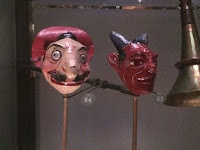It's about a person who stumbles across a suspicious rock, finds a door on it and goes inside to discover a psychedelic wonderland which becomes scarier the deeper they go. They find a door and realise they'd been wandering their own mind the whole time and escapes to the heart.
It's kind of my way of showing how deceptively beautiful the mind can be. It also has to do with how we only have so much control over our brains and we only have a very limited input to most of what's going on in there... The comic is basically an extremely watered down version of all these overwhelming thoughts. I dunno. Anyway, below are a select few pages from the final thing...

























